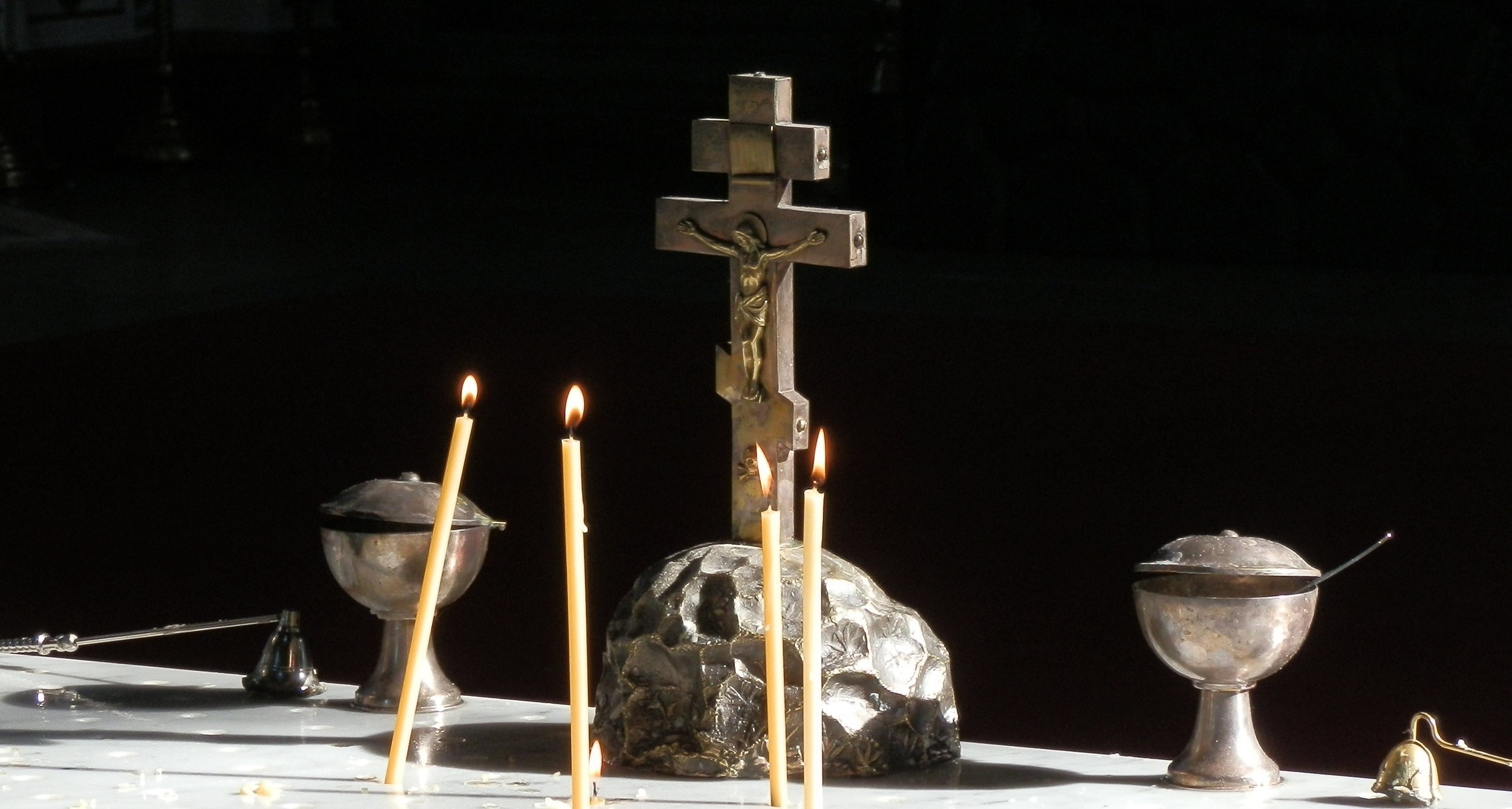Healing Atonement
Aphrahat the Persian (c.280 - 345 AD)
An old clay oil lamp from Nazareth, Israel. Photo credit: Olivia Armstrong.
The Writings of Aphrahat the Persian
Aphrahat the Persian, Demonstation 17, paragraph 10 quotes Isaiah 53 and 2 Corinthians 5:21 without any further explanation; unfortunately, nothing further can be inferred by this alone, but Jesus sharing "Godhead" with us is suggestive of theosis, which is remarkable for the Semitic-Judaic Christianity which he represents. Also, Aphrahat's teaching that Jesus "circumcizes the heart" of believers in Demonstrations 11.12, and personification of death in Demonstrations 22.1 - 5 is suggestive of a medical view of atonement
Aphrahat the Persian, Demonstation 22, paragraphs 1 - 5 handles death as a topical theme through the biblical narrative, and explains Jesus' victory over death: "And when Jesus, the slayer of Death, came, and clothed Himself in a Body from the seed of Adam, and was crucified in His Body, and tasted death; and when (Death) perceived thereby that He had come down unto him, he was shaken from his place and was agitated when he saw Jesus..."
Books and Articles on Aphrahat the Persian
William L. Petersen, The Christology of Aphrahat, the Persian Sage: An Excursus on the 17th "Demonstration" (JSTOR/Vigiliae Christianae, 1992) discusses the apparent subordinationism in Afraphat as representative of a Semitic-Judaic Christianity
Stephanie Jarkins, Aphrahat the Persian Sage and the Temple of God: A Study of Early Syriac Theological Anthropology (Marquette University, 2005) book form of her dissertation on how Aphrahat relied on the Christian vision of the individual human person as a dwelling place of God; temple anthropology means Christ purified his humanity, in which we are called to participate; includes an impressive overview of other biblical and Christian literature
Ilya Lizorkin, Aphrahat's Demonstrations: A Conversation with the Jews of Mesopotamia(Stellenbosch University, 2009) dissertation on the likely background to Aphrahat's writings
Eli Lizorkin-Eyzenberg, Semitic Chrisitianity: St. Aphrahat & The Sages of Babylonian Talmud (Amazon book, Aug 2, 2015) develops his earlier dissertation (above) and appreciates Aphrahat as a representative of a Jewish-Christian dialogue at the time and place the Babylonian Talmud was being written; see also the short article, Eli Lizorkin-Eyzenberg, A Semitic Church Father (Israel Study Center, Jul 7, 2016)
Sources of Atonement Theology
These resources explore the foundation of “Medical Substitution” as the best understanding of the Bible, and the original understanding of the church. There are also links to books, web articles, etc. from representatives of the three broad Christian traditions.





